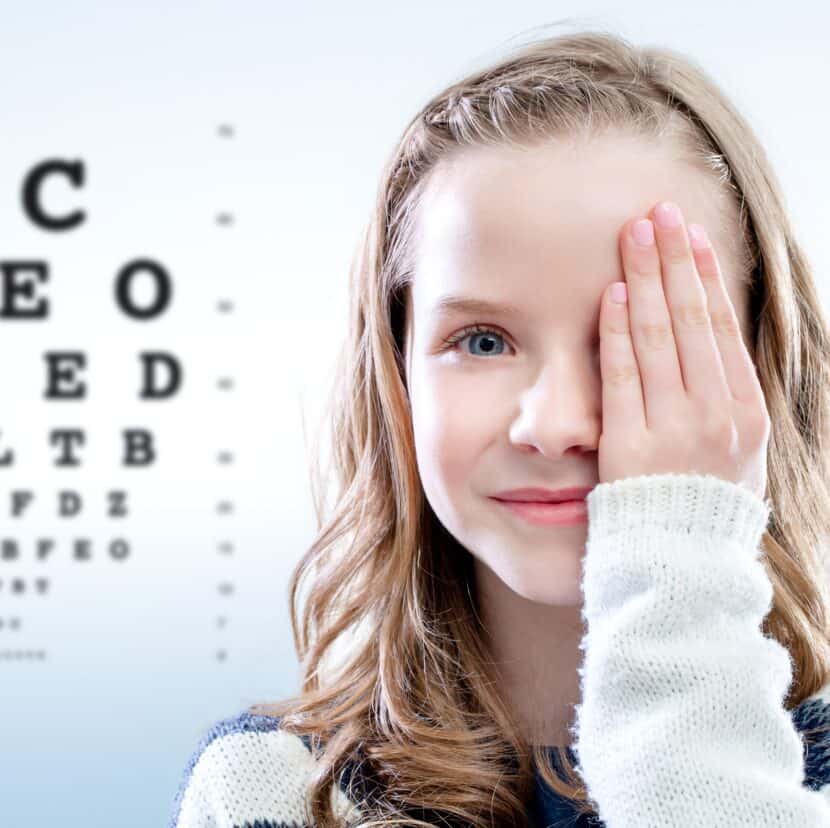Vision screenings given to children in school are no substitute for an eye exam. Here’s why.
Your child returns home from school with the results of a vision screening. The results state that your child has 20/20 vision. You think, “Great! No need for a trip to the eye doctor this year.” Right? Wrong!Amazingly, fifty one percent of individuals who pass a vision screening still have a significant vision disorder. Vision screenings typically only catch people who are near-sighted (people who can see up close but not far away) and people with astigmatism (people with oval-shaped eyes that cause them to see shadows or have double vision). Typically, far-sighted individuals pass undetected. Unfortunately, this can have devastating results on a child’s academic performance. For example, the far-sighted child may develop severe eye-strain and headaches when reading even though they can see 20/20 at distance. These children will avoid reading and doing homework to avoid the eye pain and are often incorrectly labeled lazy or unable to concentrate.
Vision screenings also fail to detect most binocular vision disorders. Binocular vision describes how the two eyes work together to produce the final image you see. People can have great visual acuity (i.e. they see 20/20), but can have poor binocular vision. People with binocular vision disorders may feel like their eyes are crossing, have eyestrain, see double, skip lines or words when reading, see words move on a page, have poor depth perception, and may be seen covering one eye or using their finger to help them to keep their place while reading. These children often read more slowly than normal and have poor reading comprehension. They are often mislabeled as being dyslexic or having attention deficit disorder. A vision screening will identify an eye turn or a “lazy eye,” but it will not test for many other binocular disorders.
Vision screenings do not test for accommodative disorders. Accommodation refers to process of shifting your focus from distance to near. People with accommodative disorders may have difficulty changing their focus from near to distance or vice versa. Their focusing system may get stuck after doing prolonged near work so that when they look up, everything in the distance is blurry. Alternatively, they may trouble engaging their focusing system. These people may not be able to see well up close, may experience words going in and out of focus, or they may suffer significant strain to see up-close. Like far-sighted individuals, these people may avoid near work.
Vision screenings do not test color vision. Color vision is important for both learning purposes and for occupational purposes. Many teachers use color coding to help teach important concepts. If a child has an unidentified color vision disorder, the child will be at a distinct disadvantage. Additionally, colorblind children should be encouraged to pursue careers that do not require perfect color vision such as certain jobs in the military, police force, aviation, and electrical work. Colorblind individuals should also carefully consider whether to pursue careers where imperfect color vision can lead to errors having serious consequences. These industries include pharmacy, painting, and food inspectors.
Most importantly, vision screenings do not provide a comprehensive evaluation of the health of the eye. Although rare, some children occasionally develop juvenile glaucoma, retinoblastoma (tumor in the retina), or Coat’s disease (fluid leaks into the back of the eye). Children with these diseases may be asymptomatic until it’s too late. In fact, 25% of children with Coat’s disease are asymptomatic and diagnosed during a routine exam. These are all blinding diseases that must be diagnosed and treated immediately.
Therefore, it is imperative that you have your child evaluated by an optometrist or ophthalmologist. Vision screenings performed by your school nurse or even visits to your pediatrician are not enough. Some pediatricians do not provide vision screenings during routine checkups, and even those who do, do not possess the equipment necessary to provide a comprehensive evaluation of the eyes. The American Optometric Association recommends that your child be evaluated between ages six months and one year, at age three, at age five, and then yearly thereafter.

Lisa Januskey
Dr. Januskey '02 is the owner and developmental optometrist at Precision Eye Care. Her goal is to provide others with the eye health and vision they need to be successful and improve the lives of others. She especially enjoys treating binocular vision disorders and pediatric optometry.

